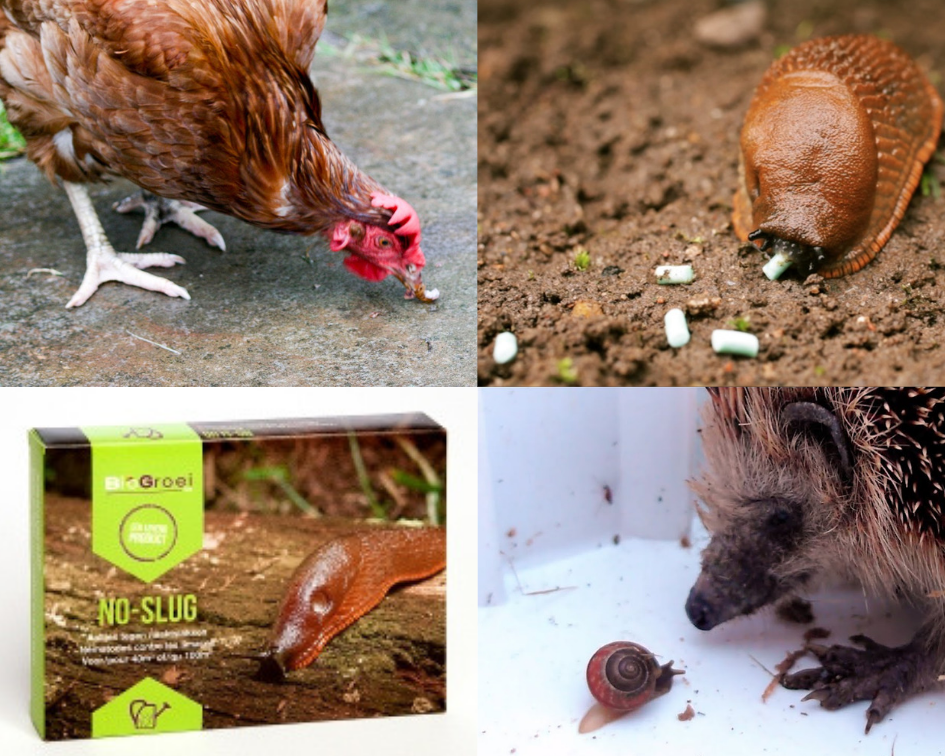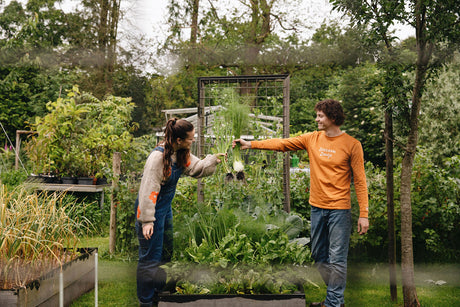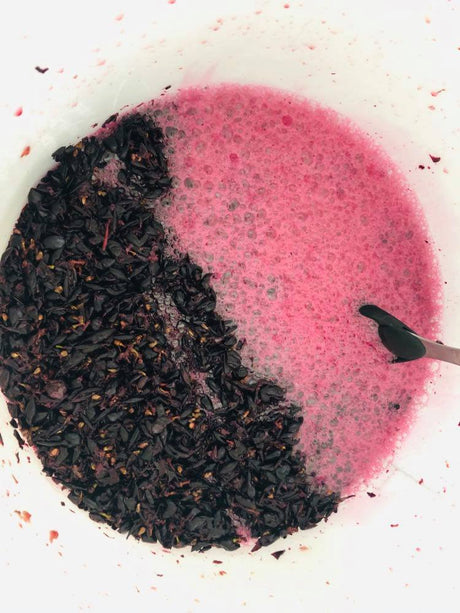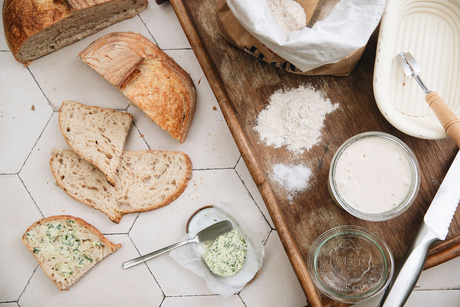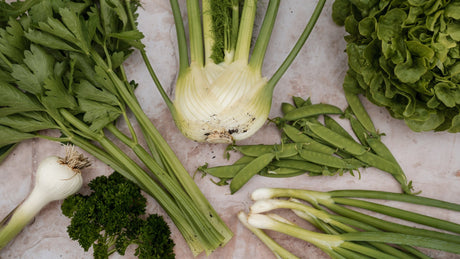Combating slugs - 4 crucial tips for eating your own vegetables
As a child I admired snails
On the way to school there was a bush with lots of snails on it. I don't remember much about kindergarten but it has stayed with me very vividly. I remember very well that as a child I found snails very beautiful. The house snails in particular had beautiful colours and curves. I also found the idea that an animal carried its own house on its back very fascinating. In case of danger they could also hide in it, my imagination as a child went wild. The feelers that went back and forth also made me stop every day, I tapped the feelers because then the snails would pull them in. Fighting snails was the furthest thing from my mind. Snail damage
Snail damageYears later I had a completely different image of snails
About 30 years later I came into contact with snails again. I had set up a vegetable garden at the back of the garden where the grass was ruined because I had stored some firewood there. I had turned over the bare spot with a digging fork and planted some plants. It was wonderful to grow my own food 20 steps from my kitchen, wonderful, isn't it? Until that one morning when I went to look in my vegetable garden and my lettuce was completely gone and my spinach too. And there were very large holes in the holes of my cauliflower . It didn't take long before I could point out the culprit. The slime trails on the (leftover leaves) said enough.What happened that admiring snails became fighting snails ?
How could it be that the snails that I also admired were such devils? As a toddler I had stood for hours at the bush looking at the snails. Picked them up and put them from one branch to another like a kind of pet. And since I have a vegetable garden I put my foot on it, I sprinkle snail pellets , I send my chickens there, ... What had happened? I had changed something. I had removed the pile of firewood with a tarpaulin. I had moved a Euro Disney is for snails. Then I removed the remaining grass and to top it all off I put vegetables in nice rows on bare earth. Not knowing that in that earth and around that space those snails and their snail eggs were still present. I don't have to explain the result.The problem wasn't the snails but my upbringing
A bit of a strange subtitle title but if you think about it you see around you many examples of how man intervenes to turn a natural situation to his advantage or to restore a threat or wrong situation. The rainforest for example where forests are cut down to make agricultural land. Or a common cold must be solved as quickly as possible. Throat lozenges, pills, syrup, ... we have to intervene to restore something or to turn it to our advantage. How we do that and what the consequences are, that is not so important. To 'restore a wrong situation' or to change a natural situation to our advantage is in our us. And in my vegetable garden I had first 'broken a natural situation' to turn it to my advantage. I was not aware of that. For me it was a pile of wood, for those snails a very interesting biotope. Then I wanted to correct 'a wrong situation' (at least for me it was wrong) because those snails had no right to eat my vegetables, what were they thinking. And I went to war.Work preventively if possible, combat snails if there is no other option.
Making peace with snails
As in my previous article about combating horsetail , we need to find some kind of compromise with the snails. They are an essential part of nature, they are also very useful and they are not really targeting your vegetables. But if there is nothing else available, they can be destructive to the vegetables in cultivation. In the rest of this chapter, we will try to understand them better in order to adapt to them. And yes, here and there a snail will die. But with a smart approach, there will not be many.What do snails eat?
As mentioned before, snails are not so keen on your seedlings, young plants or fruits. They have to put in a lot more effort to eat those things than, for example, a piece of rotting wood, a mushroom or plant remains. They like to eat things that are breaking down. For them, that is sliced bread, while our vegetable garden plants are unsliced bread. But if you are hungry, that of course does not matter and you also get to work with the unsliced bread.The internet is full of tips on how to combat snails when it is too late
When do people start looking for information about snails? Exactly when the garden has been taken over by our slimy friends and when there is almost no solution left. Then we start putting out beer that we actually buy to drink ourselves to catch snails. Or we catch snails at dusk with a light on our heads or we stick copper tape everywhere in the vegetable garden, ... I find all that admirable but it is actually too late. You should never let it become an imbalance in your garden.Apply the 4 measures for little to no snail damage
 My chickens eat snails
My chickens eat snails1. Release chickens or ducks into the garden to control snails
My chickens have been in the vegetable garden since October (after my grape harvest). In those 5 to 6 months they have eaten quite a few snails and snail eggs. I have 350 square meters of land in my large vegetable garden. I also have 4 chickens. Chickens that spend a large part of the day scratching around in search of food. They carefully comb the entire vegetable garden, no spot remains untouched. The only thing you have to do is stretch a wire or mesh around your winter vegetables. If you still have parsnips , celeriac , carrots , winter onions , winter garlic, winter cabbage, broad beans , ... or other crops, screen them off from the chickens. Half a day's work to fence everything off and then the big feast of the chickens can begin. And everything that comes out of the chicken is manure. I put the chickens back in their run when February becomes March, so that the manure can soak into the ground a bit and is no longer so powerful. Once the chickens are back in their coop, it's time to mulch, because bare soil, moisture, sun and warmer temperatures guarantee a lot of squeaky weeds. Thus far and no further
Thus far and no further2. Combating snails : Mark out a perimeter for snails
My vegetable garden borders on one side a verge of a busy road with 2 sections, a beech hedge separates my vegetable garden from the verge. On the other side there is just a grass path of one and a half meters. That grass path is not maintained by the city so the grass grows high. So many snails live on both sides. In March / April I make a demarcation in relation to the busy road and the street where my vegetable garden is. I mainly demarcate with snail pellets , they work best. People who say that snail pellets do not work have often let it get too far and only started to act when the snails are eating in full swing. You can also make a barrier with copper tape, coffee grounds or egg shells, but that is not so effective. In large vegetable gardens you would have to eat eggs every day to have enough egg shells to demarcate the garden. Hedgehogs eat snails in your vegetable garden
Hedgehogs eat snails in your vegetable garden3. Create a biotope for natural enemies of snails
If someone else can do it for you, it's even better, right? There are other animals in the vegetable garden that are only too happy with snails. A list of natural enemies against snails:- Hedgehogs
- Frogs
- Toads
- Songbirds
- Moles
- Hay wagons
- Snakes and lizards (a bit more difficult in our region)
- Centipedes
- Salamanders
- Slow worm
- Shrews
- fireflies
Combat slugs with No-slug 100m²
4. Introduce Nematodes into Your Soil to Combat Slugs
In the spring you can release tiny animals in your vegetable garden that pierce slugs and eventually kill them. They are nematodes. With the product No-slug you bring millions of nematodes into your garden. The soil must remain moist for the first two weeks after introduction so that the nematodes can establish themselves in your garden. The nematodes are also good against all kinds of larvae that are laid at the foot of your plants.Finally
My childish admiration for snails is unfortunately no longer there. But my hatred has also diminished greatly. We live together in my vegetable garden. They on the other side of the wire or beech hedge, I on the side of my vegetable garden. So know that you have to combat snails all year round and certainly not only when they are there because then it is too late. In every season you can do something against the snails. Winter (chickens or ducks), autumn (create a biotope for natural enemies and in spring and summer you can maintain the perimeter and introduce nematodes into the soil. Did you find this a valuable text, share it with your friends, within your garden association or others. You can give this site a warm heart by purchasing your vegetable garden supplies in our webshop . Moestuinweetjes stands for sustainable quality, fast delivery, personal contact and competitive prices. 4.9 out of 5 over more than 100 reviews, you don't just get that. Until later, TomMe in my vegetable garden with little to no snails :)

